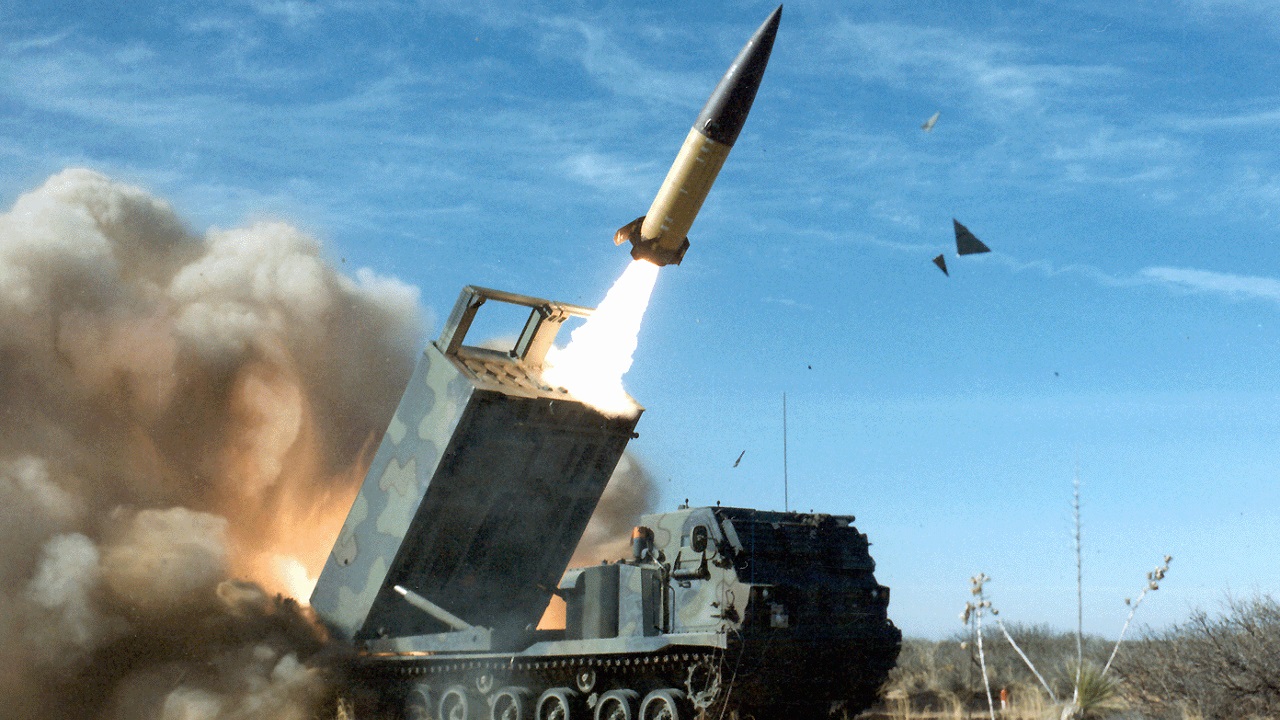Lindsey Neas

Ukrainian President Volodymyr Zelensky is repeatedly rebuffed in his requests for the long-range Army Tactical Missile System, or ATACMS. He knows these precision-strike missiles, with their range of 190 miles, would fundamentally change the course of the war if used against Russian supply lines.
The Biden administration contends that ATACMS missiles aren’t needed, and, if provided, could be used against Russia directly. It fears that giving these missiles to Ukraine would escalate the war, a concern stoked daily by Russian President Vladimir Putin.
Russian forces occupy about 40,600 square miles of Ukrainian territory. Most of Crimea and an arc along the coast sit beyond the 50-mile range of U.S.- and British-supplied missiles, making it an operational sanctuary for Russian resupply efforts.
Putin’s frontline troops depend on vulnerable supply lines in Ukraine that stretch back 200 miles. If attacked in depth, those routes would prove to be the Russian military’s greatest weakness. This is Russia’s jugular, and Putin knows this. In requesting ATACMS missiles, Zelensky proposes a deep-strike assault to substantially degrade Russia’s capability to resupply.
Historical Precedent for ATACMS
A nearly forgotten campaign ordered in 1944 by General Dwight Eisenhower is instructive. Eisenhower’s campaign set out to destroy Germany’s ability to resupply its forces at Normandy, and it was the foundation on which the success of the D-Day landings was built.
Surprisingly, Eisenhower’s plan to bomb German supply routes met with heated opposition, much as Zelensky faces today. Ike was told the plan lacked merit, it would take nine months, and continued bombing of German industry should remain the priority — not enemy supply lines. Undeterred, Eisenhower threatened to resign if not given temporary command of all heavy bombers in northwest Europe.
Known as the Transportation Plan, the bombing of French railways started in March and ran through mid-August. By D-Day, the French rail system from Normandy to Paris and beyond was near total collapse. Germany had 50 divisions in France, Belgium, and Holland, and could not get them to Normandy.
The history of Eisenhower’s interdiction campaign reads like a how-to guide for Zelensky’s military planners. While the means of delivery differs — WWII bomber formations dropping countless tons of ordnance from 30,000 feet vs. today’s precision-guided missiles — their objective, the destruction of enemy supply lines, is identical. Yet while Eisenhower understood the need to bomb not just the Normandy coast but deep inside France, U.S. President Joe Biden’s national security team, in refusing to ship long-range missiles, limits the reach of Ukraine’s military to 50 miles, leaving most Russian supply lines untouched. In sum, the ATACMS missile, while no silver bullet, offers sorely needed capabilities to Ukraine’s military.
Biden also fears Ukraine would use ATACMS missiles to strike Russian territory. Zelensky, understanding this, recently invited the president to deploy an American target verification cell into his military command structure. Biden should accept the offer, and with brutal frankness underscore his concerns by promising to halt American aid should a missile somehow be launched against Russia.
Load the C-17s
Biden’s greatest concern involves escalation. Putin’s constant threats — his escalation narrative — linking the provision of ATACMS to Ukraine with possible nuclear retaliation, make clear the tenuous state of his deployed forces. A Ukrainian assault on Russian supply lines would cripple their frontline forces. Putin has not gone nuclear, but he desperately needs Biden to believe he will. The Russian leader is exploiting the nuclear grey zone, directly and through his functionaries, stoking the U.S. president’s concerns about escalation. While Putin’s true intentions are unknown, we do know this: Zelensky sees the opportunity. He understands the risk. He wants the missiles.
Putin’s threat narrative, by delaying or preventing the provision of ATACMS, purchases the one great intangible, time, that failing militaries never have and that his struggling forces desperately need. Time permits him to increase production of heavy trucks, weapons, and munitions. It allows Russia to buy drones and missiles, and to purchase artillery shells by the shipload. The Kremlin can levy conscripts, destroy pipelines, and exploit NATO’s divisions. With winter encroaching and Russia’s attacks on Ukraine’s energy grid, time allows for exposure and disease — Putin hopes — to break Ukraine’s will.
Whether Biden calls Putin’s bluff and provides Ukraine with the long-range munitions it requires, or bows to threats and in doing so condemns her people to a war of unknown duration and possible territorial concessions, remains to be seen.
Britain’s Ministry of Defense reports that the Russian army today struggles to support its frontline forces. Their difficulties present an opportunity Ukraine could exploit if provided the missiles Zelensky so often requests. Russia’s difficulties also present Biden with an exceedingly difficult choice.
Load the C-17s. Provide Ukraine’s military with the missiles they require. We must cease taking the counsel of our fears.
No comments:
Post a Comment